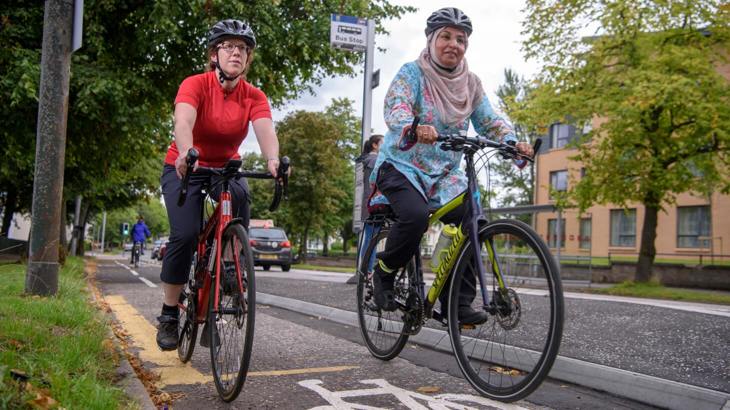Our online travel challenge is an online competition in which participants log their sustainable and active journeys to work. The latest Scottish-wide workplace challenge ran in March 2018 with over 3,700 people taking part across 300 workplaces, and over almost 60,000kg of carbon saved. When I was asked to share best practice methods for implementing behaviour change, I spent some time reflecting on why our challenge seems to be so successful.

The diagram below shows the Transtheoretical Behaviour Change Model which is currently used by professionals around the world and is based on counselling and other behaviour change theories.

(Pro-Change Behavior Systems, Inc, 2014)
Our challenge seems to address every step of this behaviour change model, it really seems to speak the language of a wide range of people.
During my transition from non-cyclist to cyclist a few years ago, I went all the way through these stages. I am now at the maintenance stage, I can cycle and I do cycle, for as many of my journeys as possible!
The Workplace Travel Challenge is a great tool for people like me to help them maintain their current levels of activity. They are recognised for their hard work, benefit from incentives and can benchmark themselves against others. However, what I am finding most interesting is the way that it gets people involved during the early stages of behaviour change. 45% are new, returning or occasional cyclists – this is a big deal.
The idea is to move people through the stages by enhancing the understanding of the pros and diminishing the value of the cons. So those people at the preparation stage thinking “I want to do it, how do I do it?” can look at the information pages, they can see which colleagues are already travelling actively and maybe link up to cycle or walk together. It gives them that final nudge.
People who are contemplative – those thinking “I can’t do it” - see all their colleagues getting involved and are able to realise that it is within their grasp.
Even the pre-contemplative – that hardest to reach group – want to get involved, as the status quo begins to change and they see that there are actually a lot of people travelling actively and sustainably (and enjoying it!), they start to become aware there are other options.
That is what it is really about – getting those people to try it out for the first time, helping them experience it. Getting people off the starting line, so to speak. And if they are anything like me, perceptions of how hard it is going to to be do not materialise. Once people try it, and keep doing it throughout a challenge, their behaviours are more likely to stick.
Ultimately the challenge reduces single car occupancy and engenders competition and collaboration within workplaces. It is becoming one of our most impactful and accessible programmes for organisations:
- increasing the amount of cycling (55%) and walking (46%) of participants
- reducing the distance travelled by car each day in 72% of participants
- 45% are new, returning or occasional cyclists
Researchers talk about it taking 21 days to form a habit, others say two months. Either way, the stats above are based on 6-month follow-up surveys showing that habits formed during the challenge are sticking.

